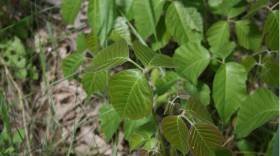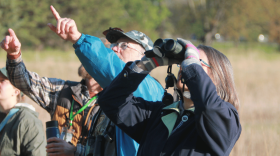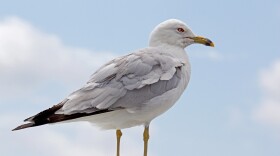Chuck Lura
Host, Natural North DakotaChuck Lura has a broad knowledge of "Natural North Dakota"and loves sharing that knowledge with others. Since 2005, Chuck has written a weekly column, “Naturalist at Large,” for the Lake Metigoshe Mirror, and his “The Naturalist” columns appear in several other weekly North Dakota newspapers.
Lura has was a long-time biology professor at Dakota College at Bottineau, publishing research on ecological aspects of grasslands in the northern Great Plains. In retirement, he continues to share his Natural North Dakota essays for the Prairie Public audience.
-
Summer is upon us! It seems that every year, questions come up on how to identify poison ivy, and what to do if a dog has been sprayed by a skunk. A little reminder of identification of poison ivy and treatment of skunk spray might be helpful.
-
The Amphibians and Reptiles of North Dakota website lists eight species of snakes documented in the state. I assume that most North Dakotans are familiar with many of these snakes, but I suspect that few have ever heard of or seen a smooth green snake (Opheodrys vernalis).
-
Whether it's watching robins in the yard, seeing an eagle soar overhead, or trying to identify a bird making that sweet call from some thick brush, birds seem to draw our interest. But many among us may not be aware of a couple aids that can help enhance our birding experiences.
-
I was perusing Robert Stewart’s Breeding Birds of North Dakota (1975) recently and noticed that he listed three species of gulls nesting in the state: California, Franklin’s, and ring-billed. He also noted that herring gulls were nesting on Stump Lake back in 1884.
-
A keystone species can be loosely defined as a species that has a disproportionately large effect on a community. They are critical components. They hold things together. And their removal from a community can set off a series of events that change the community into something quite different.
-
If the pasque flowers are not in bloom near you, they will be soon. And there are other wildflowers as well, including Draba and prairie smoke. Beauty often comes in small packages, and the spring wildflowers will help brighten your day.
-
Both grasslands and birds are rapidly decreasing in Canada — less than 15% of the native grasslands remain. To address the issue, Birds Canada has developed the Bird-Friendliness Index.
-
If you like to watch falling stars, this next month or so is a good time to see them. The Lyrids meteor shower will start soon, and it overlaps with the Eta Aquarids meteor shower. Between the two, the show will run to the end of May.
-
Shortly after beginning their journey down the Missouri River in April of 1805 after spending the winter at Fort Mandan, Meriwether Lewis wrote in his journal about an animal that Captain Clark had recently observed: “Captain Clark walked on shore today and informed on his return, that passing through the prairie he had seen an animal that precisely resembled the burrowing squirrel, accept in point of size, it being only about one third as large as the squirrel, and that it also burrows.”
-
It seems that every year when spring comes around, we are ready to go outdoors. Nature has much to offer, but all too often summer arrives, and we realize we did not get to enjoy the spring like we had hoped.










